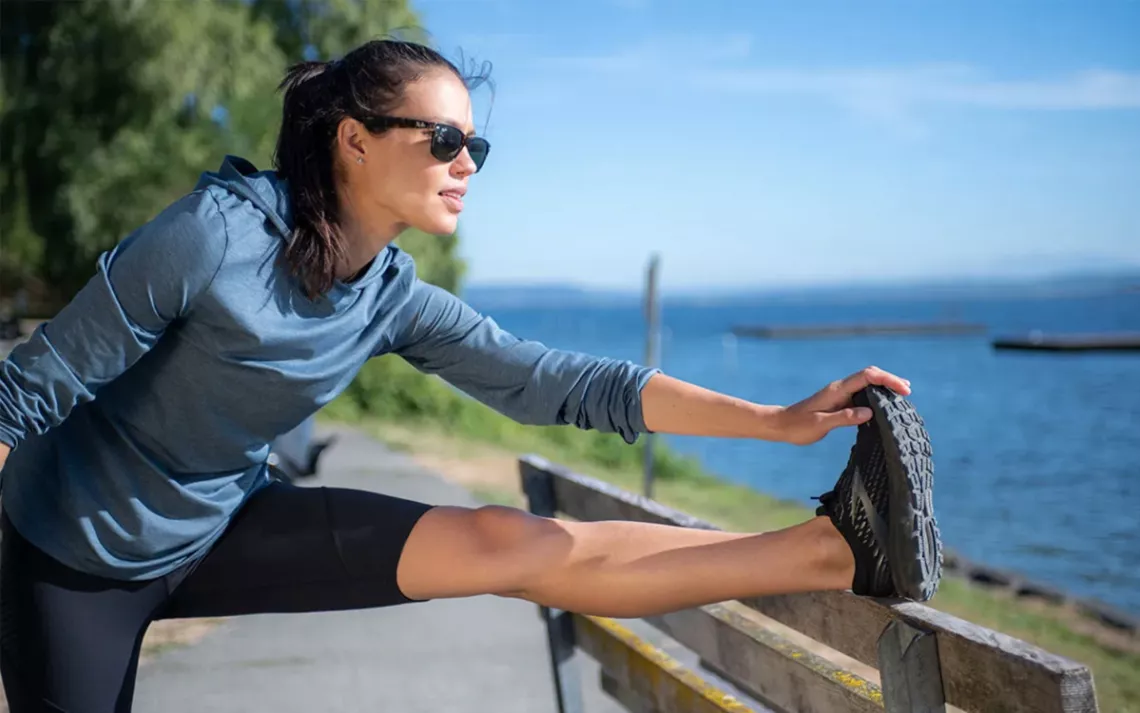UPF Clothing I Actually Use
Five essentials to keep you safe from the sun this summer

Photo by Nuture/iStock
The weather’s warming up; beach days, backpacking trips, and bike rides are just around the corner. It’s also the time of year that I start slathering myself in sunscreen. In my early 20s, I developed melanoma—a highly aggressive cancer that tends to occur in people who recreate outdoors (especially if they spend much of the year holed up indoors). Each blistering sunburn you get raises your risk of developing melanoma by 50 percent.
Since then, I’ve vowed to take better care of my skin. Each day, even when it’s overcast, I practically bathe in sunscreen before going outdoors. So far, so good. Then I forget to reapply it. Unfortunately, sunscreen is effective against the sun’s rays for only two hours. That is why, on multiple occasions, I’ve still wound up with a lobster-red, blistering sunburn that covers my whole body—exactly what I’ve been told to avoid.
Couldn’t I just wear more layers? The short answer: yes. Generally speaking, fabric will block the UV light that causes sunburns, with fabric that is darker and more tightly woven being the most effective. Denim has a UPF value of around 1700, which means that it effectively blocks 100 percent of the sun’s rays. But who wants to go for a trail run in jeans? A study by researchers at Boise State University found that many of the fabrics used to make summer clothing had UPF values of far less than the 30 that experts recommend as a minimum. A white polyester T-shirt in the study had a UPF value of roughly 17. Cotton fabric had a UPF of about 12, and linen, my fabric of choice in summer, offers virtually no sun protection.
Many outdoor clothing brands engineer clothes specifically to filter UV light while remaining breathable. A recent study published in the journal Cancers found that this kind of clothing can actually be more effective than sunscreen at blocking the sun’s rays. This summer I began field-testing UPF gear to see if it lived up to the hype. My main goals: to avoid burning and overheating. Oh, and I wanted to look cool while doing so.

Outdoor Research ActiveIce Spectrum Sun Hoodie
This hoodie has a UPF value of 50+, which means that it blocks more than 98 percent of the sun’s rays. I wore this on a bright spring day, slightly humid with wispy clouds, when I decided to go out and play soccer—a favorite hobby of mine. Unfortunately for my pasty skin, the game also doesn’t offer much in the way of shade.
The shirt was light, breathable, and much softer than the polypropylene running shirts I typically wear. Thumb holes meant the sleeves didn’t ride up on my arms. However, half an hour into the game, I felt swampy and hot, even though it was only 65°F. Conclusion: I’ll definitely wear this shirt on a bright winter day or as a coverup at the beach, but won’t be exercising in it during the heat of summer. $79, comes in women’s and men’s sizes, Outdoor Research

Samsara Getaway Shirt
This UPF 50+ button-down is designed for cycling (the company also makes more traditional cycling jerseys). The “tropical chaos” print brings serious “dad on vacation” vibes. Which is exactly what I was going for.
Recently, after two solid weeks of frigid rain and hail, temperatures in Portland hit 75°F. Alongside every other person in the city, I headed straight to the park on my bicycle.
The Getaway was loose and airy, and I stayed cool and dry during my sweaty bike rides, and while playing a few games of pickup soccer in the sun. I liked that the sleeves went down to my elbows, which meant that I had to reapply sunscreen only on my forearms—easy enough. The feel of the fabric was slightly shiny, stretchy, and very synthetic in texture—more cycling jersey than typical button-down. But according to friends, you couldn’t tell just by looking at it. Bonus: Based on the many compliments I received, I did indeed look cool. $139 CAD, comes in women’s sizes only, Samsara

Patagonia Self-Guided Hike Shirt
First of all, I felt downright dapper wearing this button-down. It’s totally appropriate for a hike or a day around town. The UPF 50+ shirt is lightweight and airy, partly because, unlike with most other UPF clothing, the protection comes not from the tightness or heaviness of the fabric’s weave but from a titanium-dioxide treatment—the same chemical found in reef-safe sunscreen. The treatment is embedded in the fabric, so it doesn’t wash out (according to Patagonia, that is).
I ordered this in white, and the light hue definitely helped keep me cool—a bonus, since white is associated with less sun protection in regular clothing. It was also easily laundered. I wore it on a muddy hike through the rainforest, and it still came out of the wash bright white. $79, comes in men’s and women’s sizes, Patagonia

Maho Shades
Bad news: Melanoma isn’t just a skin cancer. You can also develop melanoma in your eyes. As someone who has received a melanoma diagnosis in the past, I see an optometrist in addition to a dermatologist. In between appointments, I make sure to wear sunglasses. During exercise, especially running, sunglasses that slip down my nose are a real nuisance. That wasn’t a problem with these—so far, I’ve worn them on hikes, trail runs, and bike rides with zero slippage.
Something important to keep in mind when wearing sunglasses is whether they are indeed UPF. Wearing shades that don’t actually block UV rays can be more dangerous for your eyes than wearing no glasses at all—your pupils dilate to adjust to the lower-light conditions, letting in even more UV rays. These shades block 100 percent of both UVA and UVB rays. $195, Maho Shades

Outdoor Research Moab Sun Hat
A good hat is another necessary element of sun protection, especially since it’s impossible to do a skin check on your own scalp. In the past, I’ve always gone with a good ol’ baseball cap—but those don’t cover the back of my neck. The Moab Sun Hat has a three-inch brim that wraps all the way around. I tried it out on a recent backpacking trip in Northern California on a cloudless weekend. The hat fit snuggly on the sides of my head, which meant it didn’t slide around throughout the day. In addition to the back of my neck, my face felt like it got more shade than it would have with just a baseball cap. I still wore sunscreen to be extra careful, but didn’t feel the need to reapply it quite as often. The UPF 50+ canvas material is sturdy but breathable—and after several dusty days came out of the wash just fine. My girlfriend says the hat makes me look like a forest nerd, but I take that as a compliment. $49, Outdoor Research
 The Magazine of The Sierra Club
The Magazine of The Sierra Club



